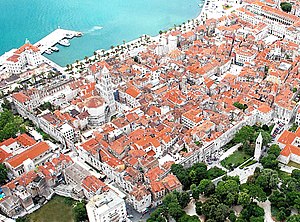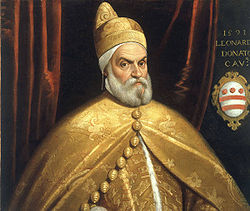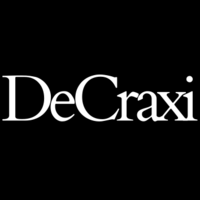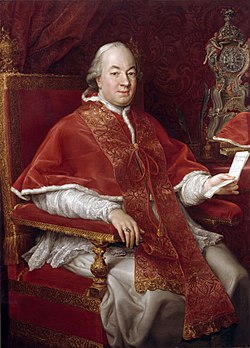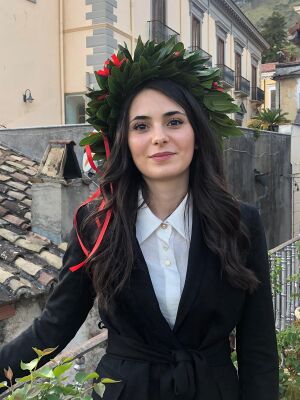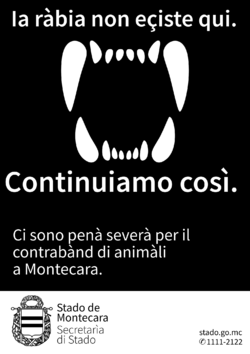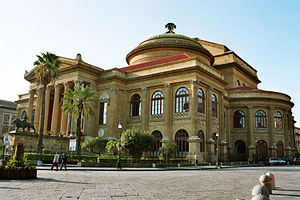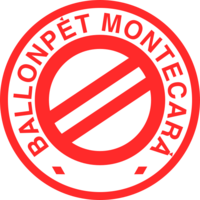Montecara
Montecaran Republic Repùblica Montecarà | |
|---|---|
Motto: Virtus nostrum tutamen "Virtue is our safeguard" (Solarian) | |
Anthem: Inno dei Populi "Hymn of the People" | |
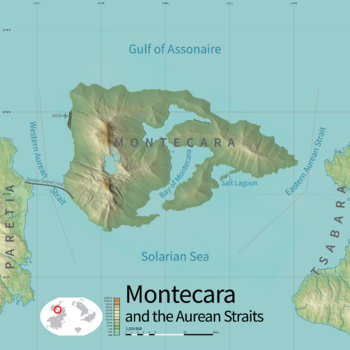 | |
| Capital and largest city | Montecara |
| Official languages | Montecaran |
| Demonym(s) | Montecaran |
| Government | Directorial republic Direct democracy |
| College of State | |
| Legislature | Senate and Popular Assembly |
| Establishment | |
• City founded | 542 BCE |
• Republic established | 426 CE |
• Independence from Functionalist Gaullica | 16 April 1935 |
• Current constitution | 9 July 1936 |
• Liberation from Etrurian occupation | 10 February 1946 |
| Area | |
• Total | 1,145.43 km2 (442.25 sq mi) |
• Water (%) | 14.28 |
• Land area | 981.82 km2 (379.08 sq mi) |
| Population | |
• 2023a estimate | 1,801,328 |
• Density | 1,834/km2 (4,750.0/sq mi) |
| GDP (PPP) | 2023a estimate |
• Total | $153,136 million |
• Per capita | $85,013 |
| GDP (nominal) | 2023a estimate |
• Total | $158,955 million |
• Per capita | $88,243 |
| Gini (2023a) | high |
| HDI (2023a) | very high |
| Currency | Montecaran libra (MCL) |
| Time zone | UTC+00:00 |
| Date format | yyyy-mm-dd (official) dd-mm-yyyy (common use) |
| Driving side | right |
| Calling code | +106 |
| Internet TLD | .mc |
| |
Montecara (Montecaran: /ˌmon.teˈkä.ɾä/), officially the Montecaran Republic (Montecaran: Repùblica Montecarà), is a city-state of approximately 1.8 million people located in Eastern Euclea. It consists of a main island and scattered islets strategically located in the middle of the Aurean Straits between Euclea and Coius where the Solarian Sea meets the Gulf of Assonaire, the narrowest point of the world's busiest sea lane. It shares maritime borders with the Paretian kingdom of Luzela and the Tsabaran province of Natanya. Montecara is noted for its unique government and rich history and culture, and for being one of the smallest and wealthiest nations in the world.
Montecara is governed under a directorial system system based on nonpartisan, direct democracy, setting it apart from almost all modern states. Every citizen aged 20 and older is a member of the legislature, either in the Popular Assembly (Senblèa Popolà), the lower house, or the Senate (Senàt), the upper house. The College of State, a seven-member body elected by the Senate from among its members, is the collective head of government and makes executive decisions by consensus.
The Montecaran economy is highly developed and specialized and one of the most open in the world. The state is a major financial center and offshore banking hub and maintains an open ship registry, with the result that nearly one in five of the world's merchant ships is Montecaran-flagged. The state controls a large number of corporations under the umbrella of Montepietà, the sovereign wealth fund, which feeds dividends back to the public treasury. The state assess no income, capital gains, estate, or dividends taxes, which makes it an attractive location for wealthy individuals and multinational firms but has also led critics to label it a tax haven. Montecara is a free port and levies almost no tariffs. The currency is the Montecaran libra.
While not a member of the Euclean Community, Montecara participates in several Euclean institutions. It is in the Zilverzee Area and Euclean Common Defense Treaty Organization (ECDTO). Montecara is home to the Aurean Forum and the secretariat of the Concordance eucléenne.
Because of its considerable age and natural limits to growth as an island state with rugged terrain, Montecara boasts a dense and walkable urban environment surrounded by well-preserved areas of natural beauty. These factors have contributed to making Montecara one of the world's premier tourist destinations, with an estimated 7.1 million visitor arrivals in 2017.
Etymology
Little is known about what early human settlers in Montecara called the island. The first written record that provides a definitive name is a tablet discovered near Bayadha in northern Tsabara dated to approximately 1000 BCE which refers to 𐤇𐤉𐤌 (ḥym), possibly a compound formed from roots meaning "sea" and "enclosure." Ancient Piraeans referred to the island as Πύλαι (Púlai), likely from a root meaning "gateway." The current name comes from the Solarian roots for "mountain" and "face," evidently from the striking rock formation that dominates Montecara's skyline.
History
| Part of a series on the History of Montecara |
| Historic rulers of Montecara |
|---|
 |
| Piraean polis |
| 542 BCE – 415 BCE |
|
|
| 415 BCE – 259 BCE |
|
|
| 259 BCE – 15 CE |
|
|
| 15 CE – 426 CE |
|
(Ducal Republic) |
| 426 – 1792 |
|
|
| 1792 – 1810 |
|
|
| 1810 – 1935 |
|
|
| 1935 – 1944 |
|
|
| 1944 – 1946 |
|
|
| 1946 – present |
Prehistory
A land bridge connecting Euclea and Coius formed approximately 5.5 million years ago, becoming a much broader connection between the two continents during the last ice age before reverting to a narrow isthmus amid rising sea levels by 17,000 BCE. Because of its strategic location, the Montecaran land bridge became the primary migration route for early humans leaving Coius for Euclea.
By the end of the ice age in approximately 9000 BCE, Montecara had assumed its present island form. With the dissolution of the land bridge, the island became a semi-permanent place of refuge for tribes which sustained themselves by fishing in its protected bay along trips up and down the Euclean and Coian coasts in a form of marine nomadism.
Classical period
Piraean sailors reached Montecara in the early sixth century BCE and recognized its usefulness as a natural harbor and place of abundant fish. A permanent colony soon followed, with the exact year of Montecara's foundation as a city traditionally given as 542 BCE.
Montecara was conquered by forces of the Solarian Republic in 259 BCE. The city would remain part of the Solarian world for nearly seven centuries, with Solarian civilization leaving a profound mark on Montecaran government, language, art, and culture that endures to this day.
The Solarians wasted little time in recognizing Montecara's economic value. The expansive natural harbor offered protection for seafarers and made it easy to harvest abundant stocks of shellfish. Perhaps even more importantly, the Salt Lagoon was a readily accessible source of sea salt thanks to its vast, shallow expanse and Montecara's warm climate, which allowed for easy and inexpensive solar evaporation. Early trade was organized around fishing, salting the catch, and then exporting it to other parts of the Republic. Archaeological records indicate that the salted fish trade was being exploited on an industrial scale by the middle of the first century BCE.
The city remained part of the Solarian world through the fall of the Republic and birth of the Empire in 15 CE. Central authority began to crumble in the early fourth century CE, and after a series of civil wars exhausted the state's resources, the last Imperial troops withdrew from Montecara in 426.
Middle ages

By the early fifth century, Montecara had been left largely to fend for itself. The population dwindled as Solarian civilization receded, drying up trade and leaving infrastructure to crumble. Montecara was once again a minor fishing settlement and trading post that fought off occasional seaborne raids, only surviving thanks to its sheltered location and Solarian-built defenses. It existed amid a patchwork of other city-states, feudal holdings, and petty kingdoms that had been left behind as civilization faded.
It differed from them, however, in its advantageous geography and stable governance. Because the city's leading families recognized their need to band together in a world of hostile pirates and barbarians but were also determined not to let any one family grow too powerful, they maintained the city-state's Solarian civic republicanism. Emulating the government of the old Republic, they formed a Senate of prominent family chiefs who chose a leader from among themselves. This official was called the Doxe (from Solarian dux, "leader"), and he served for life as primus inter pares. This in turn strengthened the state's identity and gave its rulers a sense that they had a stake in the common good, and that they could not simply rule for their own profit and power.
From the sixth through the tenth centuries, Montecara grew considerably in might as its fleet grew from fishing boats to powerful galleys. As the fleet reached far-flung ports, mariners set up colonies and trading posts around the Solarian Sea that reached deep into the hinterland. Citizen-soldiers were augmented by large numbers of mercenaries recruited from abroad. This colonial thalassocracy became known as the Stado Ultramarìn (Ultramarine State). The city-state's newfound naval power enabled it to negotiate treaties with other states that granted it trade concessions in exchange for naval protection. Montecara's stores of salt and preserved fish made it an important trade destination, and the salt tax (gabèla) became a major source of state income. Merchant fleets were supported by an increasingly elaborate financial system that included some of the first precursors to joint-stock corporations by the early 1300s.
This period also laid the foundation of Montecara's formidable banking sector as the process of financing trade became formalized. Lending money at interest was considered unholy, so Montecaran merchants skirted around the practice in various ways, for instance by lending in one currency or precious metal and requiring payment in another, higher-valued alternative. As these arrangements became common, the taboo against moneylending faded, and the forerunners of modern banks were founded in the twelfth century. Montecarans also laid the groundwork for the modern system of government bonds, in large part thanks to the fact that, as a republic, creditors did not need to fear that a truculent king or prince might refuse to pay back the loans that had been issued to him personally. Montecaran credit was the responsibility of the state as a whole, which greatly increased lenders' confidence that they would be paid back and thus allowed Montecara to borrow at far lower rates than would have been offered to monarchs. This cheap credit was reinvested in infrastructure, naval power, and early industry, providing Montecara with a key advantage against other polities of the era.
The elite used their wealth to fund great achievements in art and architecture, including the Basìlica di San Stefàn (completed circa 1290). Wealthy merchant families patronized authors, playwrights, composers, acting troupes, and musicians, even outbidding each other to secure the most fashionable artists for their households. Fashion, too, became a focus of elite life, with the most expensive outfits fetching sums large enough to buy an apartment.
This period of growth and prosperity also had a dark side. The Montecaran economy became reliant on an exploitative trade system based on plantation-grown coffee, spices, cocoa, sugar, and tobacco, and most notoriously, the Coian slaves who produced these lucrative crops. Montecara became a hub of the slave trade by the mid-16th century. Captives from Coius and western Euclea were brought in fetters to Montecara to be sold, often being reexported to continental Euclea. The most common use for slaves sold in Montecaran markets was as agricultural labor; women, considered more useful for domestic purposes, fetched a premium, and eunuchs were some of the most valuable slaves of all. This meant that a lively trade in these castrati arose, and slave-trading houses often employed a professional castratòr to neuter prepubescent boys. The long tradition of castrati in Montecaran music is one of the curious legacies of this period. The Montecaran slave trade was finally abolished only in 1820, though slavery was banned on Montecaran soil in 1758 due to fear of slave rebellions.
Early modern period

Montecara's navy, which boasted over 3,000 vessels at its height, was made increasingly obsolete during the seventeenth century by the widespread adoption of large sail-powered vessels in place of sail-and-oar ships. Montecaran commanders, who had always favored large crews of oarsmen to power their warships, were hampered by intransigence and soon found their military edge dulling. The republic gradually lost many of its overseas territories to hostile neighbors throughout the seventeenth and early eighteenth centuries.
Occupation by the Etrurian First Republic
Forces of the Etrurian First Republic led by General Giorlamo lodare-Dio Schiave invaded and occupied Montecara on 31 July 1792, resulting in the loss of Montecaran sovereignty for the first time in over 1300 years.
Gaullican rule
Control of Montecara passed to the Gaullicans after the end of the Etrurian revolutionary wars, and Montecara came under the dominion of the Gaullican Empire on 12 August 1810. It would remain Gaullican territory for the next 125 years. Gaullican geopolitical theorists, most notably Hugues Subercaseaux, emphasized Montecara's strategic importance as the keystone of the Euclo-Coian Transition Zone, a theory developed after Gaullica annexed Montecara and large portions of modern Tsabara to justify Gaullican imperialism in the region.
Throughout the 19th century, the Gaullicans ruled Montecara with a light touch. Although Gaullican became the language of government and higher education, there was no organized effort to Gaullify Montecaran society. Montecaran language and culture remained lively among the common people, and Montecaran-language newspapers and books remained freely published. Because graduates of the University of Montecara were all by necessity fluent in Gaullican, they were often recruited as administrators by the imperial government, which had the effect of creating a relatively wealthy pro-Gaullican faction in Montecaran society. Montecara was legally part of metropolitan Gaullica and was represented in the imperial Senate, with adult male suffrage
The Gaullicans built important infrastructure, modernizing the Port of Montecara and building the island's first railroads, modern sewer system, and electric and gas lines. Montecarans were often recruited into the Gaullican Navy and merchant marine, where their expertise at seafaring was valued. Social progress accompanied the industrial revolution, and Gaullica banned child labor in 1867 and created Montecara's first system of public schools in the 1880s. Universal male suffrage was established in 1889.
Montecara was, along with the rest of the empire, brought under the rule of the functionalist Parti Populaire on 7 October 1920. Socially, Gaullican functionalism was a backlash against the modernizing trends of the late nineteenth and early twentieth centuries. The government imposed strict Catholic social and religious mores; it closed brothels and attempted to "rehabilitate" sex workers by confining them in workhouses and convents, which forced the sex trade underground and made it far more dangerous for those who still plied it. The regime was stridently opposed to homosexuality and shuttered meeting places, especially bars and clubs, that were seen to have an LGBT clientele. Inter-community relations between Solarian Montecarans and Atudites, many of whom had roots in Montecara that were centuries-deep, deteriorated as the government promoted an ethno-racial hierarchy and attempted to forcibly assimilate minorities by encouraging the intermarriage of ethnic Solarian men and minority women. The regime lasted fifteen years until the defeat of the Gaullican Empire in the Great War.
Independence and interwar period
The reassembled Senate proclaimed independence on 16 April 1935, making Montecara independent for the first time in 142 years.
Solarian War
The Etrurian Revolutionary Republic, formed in 1938 under the rule of Supreme Leader Ettore Caviglia, had an ambition of rebuilding the ancient Solarian Empire. The assimilation of Montecara was to be a key part of this plan, both for its strategic location and for its idealized status as a bastion of Solarian civilization.
Etrurian forces landed in Montecara early on the morning of 4 March 1944. The Etrurians soon organized a referendum, later proved to be fraudulent, that legitimized the occupation and formally made Montecara part of the Etrurian state. Montecara would remain under occupation for nearly two years. CN forces attacked and liberated Montecara over the course of 8–10 February 1946.
Geography
| Name | Area |
|---|---|
| Montecara | 980 km² |
| Lazarèt | 1.07 km² |
| Oçì | 7.598 hectares (0.076 km2) |
| Romìta | 6,305 square metres (0.63 ha) |
| Incùda | 4,321 square metres (0.43 ha) |
Montecara consists of an archipelago in the Aurean Straits dominated by its largest island, officially called the Island of Montecara but referred to locally as ia Ixolòna ("the Big Island"). It measures approximately 54 kilometers across its extreme points. It is nearly cut in half by an immense natural harbor, the Bay of Montecara, which has sheltered vessels and provided food to local inhabitants for millennia. The bay is considered part of Montecara's integral territorial waters. The outer, ocean-facing coastline includes the Salt Lagoon, a natural area of shallow water enclosed by levees that is so named because it has been exploited as a ready source of sea salt since antiquity. The island's coastline measures just over 303 kilometers. Other islands adjacent to the main island include Lazarèt and Incùda, a barrier islands at the mouth of the Salt Lagoon, and Oçì, an islet in the Bay of Montecara that has hosted a small monastic community for over a thousand years. The smallest and most remote island belonging to Montecara is Romìta, a barren islet just over two kilometers off the northern coast.
The islands and surrounding region have a topography of rugged cliffs and cavernous rock formations formed mostly of limestone. This exposed stone has long provided locals with a readily accessible building material but has limited the island's arable land, one of the main factors motivating Montecara's long reliance on trade and emphasis on fishing. Despite its small size, Montecara features dramatic changes in elevation. Its highest point is the peak of ia Coronèla at 1,231 meters above sea level, and parts of the island have cliffs of 30 meters or more that drop off into the sea. Sitting below the peak is the mountain's caldera, a lake with a surface area of approximately 13 square kilometers and a shorline of approximately 30 kilometers. It has a volume of about 0.26 cubic kilometers, an average depth of about 22 meters, and a maximum depth of just under 50 meters. Geological hazards include sinkholes and earthquakes.
Climate
Montecara is situated 39 degrees north of the equator at the point where two continents and two seas touch. This geography creates wind and sea currents that moderate the often hot climate at this latitude. Montecara has a mediterranean climate (Köppen: Csa), with mild winters and hot summers. Higher elevations are considerably cooler and wetter than the coast.
| Climate data for Montecara–Enrico Dulio International Airport (1997–2022, extremes 1920–2022) | |||||||||||||
|---|---|---|---|---|---|---|---|---|---|---|---|---|---|
| Month | Jan | Feb | Mar | Apr | May | Jun | Jul | Aug | Sep | Oct | Nov | Dec | Year |
| Record high °C (°F) | 21.5 (70.7) |
21.6 (70.9) |
27.2 (81.0) |
27.7 (81.9) |
30.7 (87.3) |
34.4 (93.9) |
39.6 (103.3) |
37.8 (100.0) |
34.5 (94.1) |
31.3 (88.3) |
25.4 (77.7) |
21.6 (70.9) |
39.6 (103.3) |
| Mean maximum °C (°F) | 17.6 (63.7) |
18.0 (64.4) |
20.6 (69.1) |
22.5 (72.5) |
26.5 (79.7) |
31.2 (88.2) |
33.0 (91.4) |
33.2 (91.8) |
29.7 (85.5) |
26.4 (79.5) |
22.4 (72.3) |
19.0 (66.2) |
34.0 (93.2) |
| Average high °C (°F) | 14.1 (57.4) |
14.2 (57.6) |
15.9 (60.6) |
18.0 (64.4) |
21.6 (70.9) |
25.8 (78.4) |
28.9 (84.0) |
29.2 (84.6) |
26.2 (79.2) |
22.7 (72.9) |
18.1 (64.6) |
15.2 (59.4) |
20.8 (69.4) |
| Daily mean °C (°F) | 10.8 (51.4) |
10.8 (51.4) |
12.3 (54.1) |
14.3 (57.7) |
17.8 (64.0) |
21.8 (71.2) |
24.9 (76.8) |
25.4 (77.7) |
22.6 (72.7) |
19.4 (66.9) |
14.9 (58.8) |
12.1 (53.8) |
17.2 (63.0) |
| Average low °C (°F) | 7.5 (45.5) |
7.4 (45.3) |
8.6 (47.5) |
10.6 (51.1) |
13.9 (57.0) |
17.8 (64.0) |
20.8 (69.4) |
21.5 (70.7) |
18.9 (66.0) |
16.1 (61.0) |
11.6 (52.9) |
9.0 (48.2) |
13.6 (56.5) |
| Mean minimum °C (°F) | 3.6 (38.5) |
3.2 (37.8) |
4.6 (40.3) |
6.6 (43.9) |
10.4 (50.7) |
13.7 (56.7) |
17.4 (63.3) |
17.9 (64.2) |
15.0 (59.0) |
11.1 (52.0) |
6.8 (44.2) |
4.5 (40.1) |
2.2 (36.0) |
| Record low °C (°F) | −2.4 (27.7) |
−1.1 (30.0) |
−0.1 (31.8) |
1.6 (34.9) |
6.4 (43.5) |
10.2 (50.4) |
13.6 (56.5) |
13.6 (56.5) |
9.4 (48.9) |
5.2 (41.4) |
2.0 (35.6) |
−1.0 (30.2) |
−2.4 (27.7) |
| Average precipitation mm (inches) | 52 (2.0) |
54 (2.1) |
38 (1.5) |
45 (1.8) |
37 (1.5) |
14 (0.6) |
3 (0.1) |
20 (0.8) |
61 (2.4) |
78 (3.1) |
88 (3.5) |
61 (2.4) |
546 (21.5) |
| Average precipitation days (≥ 1 mm) | 7 | 7 | 6 | 6 | 4 | 2 | 1 | 2 | 5 | 7 | 8 | 9 | 64 |
| Mean monthly sunshine hours | 144 | 146 | 202 | 222 | 270 | 311 | 347 | 312 | 225 | 183 | 142 | 130 | 2,632 |
| Source: Secretariat of Planning and the Environment | |||||||||||||
| Sea and solar data | |||||||||||||
|---|---|---|---|---|---|---|---|---|---|---|---|---|---|
| Month | Jan | Feb | Mar | Apr | May | Jun | Jul | Aug | Sep | Oct | Nov | Dec | Year |
| Average sea temperature °C (°F) | 14.6 (58) |
13.8 (57) |
14.1 (57) |
15.7 (60) |
18.7 (66) |
22.2 (72) |
24.4 (76) |
25.8 (78) |
25.1 (77) |
22.9 (73) |
20.4 (69) |
17.1 (63) |
19.4 (67) |
| Mean daily daylight hours | 10.0 | 11.0 | 12.0 | 13.0 | 14.0 | 15.0 | 15.0 | 14.0 | 12.0 | 11.0 | 10.0 | 9.0 | 12.2 |
| Average ultraviolet index | 2 | 3 | 5 | 6 | 8 | 9 | 9 | 8 | 6 | 4 | 2 | 2 | 5.3 |
| Source: Secretariat of Planning and the Environment | |||||||||||||
Plant and animal life
Montecara is home to a diverse array of native plants and animals typical of the southeastern coast of Euclea, including a wide variety of marine life, migratory birds, reptiles, and amphibians. All old-growth forests have long been cut down, so the native plant biome is dominated by small trees and hardy shrubs and grasses, collectively referred to as màçia, which tolerate hot and dry seasons well. Carob, laurel, and holy pine thrive. Olives, figs, and citrus are ideally suited to the climate and are both cultivated and grow wild. Marine vegetation grows vigorously in marshy areas and near surface water, notably sea daffodil, sea kale, sea lavender, and golden samphire. Orache, an edible plant similar to spinach, grows on cliffs and among rocky scree.
The country is on a major flyway for migratory birds, with some 170 species observed. Storks, harriers and falcons are some of the most visible. Frequently sighted seabirds include cormorants, herons, pelicans, ducks, and gannets. The state has banned birdlime since 1982 and has repeatedly shortened the bird-hunting season, but illegal hunting and trapping remains a problem.
Many reptile species are well-suited to the climate. The island is home to the common chameleon, house gecko, wall gecko, at least three species of skink, and six species of lizard. Snakes include the smooth snake, whip snake, malpolon snake, and ladder snake, none of which is dangerous to humans. Pond turtles are common, and the vulnerable Piraean tortoise and endangered Lascalles tortoise have small local populations.
Amphibian species include a variety of frogs, toads, newts, and salamanders. The painted frog, parsley frog, and Aurean green toad are common.
Almost all mammal species are introduced, the only exceptions being the native lemon shrew and a number of bats. Introduced small mammal species include rabbits, hedgehogs, martens, and ferrets.
Politics

Montecara is a liberal democratic republic with a written constitution. Politics in Montecara are based on a direct-democratic system, wherein every adult citizen is a member of either the Popular Assembly or Senate and is accordingly entitled to participate in the legislative process. Unlike in most states, politics is built on a model that strongly favors consensus decision-making. The legislative and executive are both designed to diffuse power and operate on the basis of cooperation rather than competition, and as a by-product, the personalities of individual politicians are heavily de-emphasized in favor of the best interests of the group. The result is a system that has a strong base of popular consent, albeit one which is also criticized for its slow pace and technocratic inclinations.
Constitution
Montecara's current constitution was drafted after the end of the Gaullican occupation and ratified in 1936. It was strongly influenced by a desire to restore the old republican traditions that had been quashed by foreign occupation. Consequently, it was one of the most progressive constitutions in the world when it was ratified and is still considered a model for its strongly democratic structure and extensive civil and political rights.
Citizenship
Montecara is a jus sanguinis state, in which birthright citizenship is only available to people with at least one Montecaran citizen parent at the time of birth. The only other way to acquire Montecaran citizenship is to have it granted by law, which generally requires at least 10 years' legal residency.
The Montecaran government does not recognize multiple citizenship; Montecaran citizens who acquire the citizenship of another country or who become members of a noble or royal house are considered to have renounced their citizenship. Similarly, naturalized citizens are considered to be solely citizens of Montecara. Montecarans can also lose their citizenship if they serve another country in a civil office or military capacity or formally renounce their citizenship.
Legislature
(The Senate and the People of Montecara decree)
—Enacting formula for Montecaran laws
Montecara's political system is designed to distribute power as broadly as possible in order to maintain a powerful citizenry. Accordingly, it is governed as a direct democracy and directorial republic, with elements of sortition added to prevent corruption. Citizens of legal age who are not Senators are all members of the Popular Assembly, the lower house of the legislature, which must approve all laws and treaties before they come into effect. Voting was once done at mass meetings held in public squares, but since 1988 has been done exclusively by postal ballot for one week each in March and September.
The Senate (Senàt) is the upper house of the legislature, comprising 125 senators elected from 25 five-member constituencies by single transferable vote.
The seven-member College of State functions as the collective head of government and cabinet and is responsible for proposing legislation and setting policy.
Judiciary
Montecara is a civil law jurisdiction, basing its judiciary on Solarian law. Trials are conducted using the inquisitorial system. Judges are appointed by law, and courts are organized into a three-tiered hierarchy with separate streams for civil, criminal, and administrative cases. Criminal cases are prosecuted by a procurator (procuradòr), a state official. The Procurator-General (Procuradòr-xenèr) is the state's senior prosecutor and is called on to represent the interests of the state itself in matters of national or international importance. Because Montecara's judiciary is governed by civil law, judges are not empowered to make or invalidate laws; nonetheless, the doctrine of jurisprudence constante is influential, and courts will often cite similar cases where the same judgement was reached when making their decisions.
Criminal offenses are categorized into three tiers: the contravènxon (minor offense), delito (intermediate offense), and crìma (grave offense). Crimà are the only cases tried by a jury, with a single judge or magistrate trying all other offenses. There is no insanity defense; defendants judged guilty but insane are committed to specialized psychiatric care within the penal system. Administrative offenses, including petty traffic violations, are punishable only with fines or other remedies such as removal in the case of immigration violations, not a custodial sentence.
Montecara has a moderate-to-low incarceration rate by world standards of 75 per 100,000 people as of 2018. This works out to a prison population of approximately 1,300 inmates on average for 2018. These inmates are held in one of three principal locations: the main, mixed-security prison at Molàro, the special unit for medical and psychiatric prisoners at the Ospedàl Marìn, or the military prison at Castèl Gerò. By far the largest and most populous of these is Molàro, which holds approximately 1,000 prisoners. There are six to nine murders in an average year; the homicide rate as of 2017 is .51 per 100,000 people.
Administrative divisions

(Montecara–Enrico Dulio International Airport is located in Orèad)
As a city-state, Montecara has a single government responsible for all matters that are in larger countries handled at national, regional, and local levels. The main territorial divisions are the three tèrçi, roughly equivalent to boroughs, which have no government but are used for administrative and statistical purposes. The old city is divided into six traditional sieteri (neighborhoods).
Public safety
Law and order are maintained by the Dragoons, an armed police service organized as a component of the Public Force. In addition to ordinary police duties, the Dragoons are responsible for guarding Montecara's coasts and ports of entry, policing the military, protecting Montecaran diplomatic missions, staffing the prison, and serving as an anti-terrorism force. Its elite unit, responsible for protecting public officials and important public buildings, is the Brigade of Cuirassiers. There is a persistent problem with organized crime in Montecara which a dedicated section of the Dragoons is dedicated to combating.
Ambulance, firefighting, and search and rescue services are provided by the Spartòli. Its members are expected to work not only as a professional lifesaving force but as an embedded civil defense corps, preparing their neighborhoods for disasters and taking the lead in the event of a crisis. Montecara's defense policy is based on the idea that the whole population must be able to provide for its immediate needs in an emergency, so the Spartòli maintain an auxiliary of trained civilians who are responsible for aiding in a first response; they are in turn expected to lead and assist their neighbors and coworkers so that the entire population can stay resilient. Every household in Montecara is issued an instructional booklet detailing civil defense procedures at regular intervals, and the state maintains a multi-channel alert system that includes public sirens and loudspeakers, radio and television broadcast interruption capabilities, and mass text messaging.
Military
Montecara's military is known as the Public Force. It consists of the Montecaran Army, Montecaran Navy, Montecaran Air Force, and the Corps of Dragoons. The Montecaran constitution requires the military to be organized as a militia, so the vast majority of servicemembers are conscripts serving an initial term of 12 or 18 months, usually beginning at graduation from secondary school at age 18. All able-bodied citizens and permanent residents, male and female, are eligible. Once a conscript's term of service is complete, he or she is considered a qualified soldier and remains on the reserve list until reaching the age of 40 (for other ranks) or 45 (for officers).
Foreign relations

Montecara enjoys good relations with its immediate neighbors in Euclea, particularly the nations of the Euclean Community. While it is not an EC member state, it is in the Zilverzee Area and cooperates in defense and judicial matters. Relations with its other immediate neighbor, Tsabara, have often been strained because of persistent illegal migration and have further deteriorated as a consequence of the ongoing Tsabaran Civil War.
The country became a member of the Community of Nations shortly after its independence in 1936. A Montecaran, Giove Andriola, served briefly as the interim Secretary-General of the Community of Nations after the death of Seán Fitzgerald in 1961.
Economy
 The Borse Mercànte on a trading day | |
| Currency | Montecaran libra (MCL, Ł) |
|---|---|
| 1 April – 31 March | |
Trade organizations | ITO |
| Statistics | |
| GDP |
|
| GDP rank |
|
GDP growth |
|
GDP per capita |
|
GDP per capita rank |
|
Population below poverty line | |
Labor force | (77% participation rate, 2020) |
| Unemployment | |
Main industries | tourism, finance, ICT, pharmaceuticals, food and beverages, transport |
| External | |
| Exports | |
Export goods | pharmaceuticals, medical devices, fish and shellfish, alcohol, printed media |
Main export partners | |
| Imports | |
Import goods | mineral fuels and oils, electronics, machinery, ships, aircraft, vehicles, consumer goods, foodstuffs |
Main import partners | |
Gross external debt | |
| Public finances | |
(87% of GDP, 2020) | |
| Revenues | ($32,557 pc, 2020) |
| Economic aid |
|
| |
Montecara has a highly developed and specialized market economy with a large state sector. It consistently ranks at or near the top of international surveys on the ease of doing business, low taxation, and per-capita foreign investment. The largest segment of the economy is the service sector, particularly banking and finance, tourism, and professional services. There is a small but high-value-added manufacturing sector which mostly produces niche products such as medical devices and precision instruments. The primary sector is quite limited given Montecara's small land area and is focused on fishing and high-value agriculture like winemaking.
Because its economy is so integrated into the global financial market and reliant on international trade, it is a bellwether for the financial health of the world at large. The trade-to-GDP ratio is over 250%, making Montecara the most trade-dependent country in the world.
Around one third of workers belong to a trade union. Education, media, and the public sector have particularly high union density.
The stock and bond exchange, the Borse Mercànte de Montecara, is the oldest in the world and lists domestic joint-stock companies as well as local and foreign debt securities.
Public finance
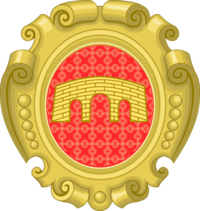
Bànca de Montecara is the city-state's central bank and issues the libra (code: MCL; symbol: Ł), the national currency. The Bànca, aside from issuing currency, also performs certain financial regulation duties.
Controversially, Montecara is a well-known tax haven. It assesses no taxes on personal income, inheritance, or capital gains; instead, the state collects excises and taxes on corporations, land, and added value and assesses various transfer taxes.
The country operates a sovereign wealth fund, Montepietà, which invests mostly in securities and real estate with some involvement in foreign exchange and private equity. It traces its lineage to a mount of piety founded in 1213, making it one of the world's longest-running commercial enterprises. Profits earned on Montepietà's investments are transferred to the Montecaran treasury and used to fund the public health service (Sànita Montecarà) and social insurance programs. This arrangement allows Montecara to have very low tax rates compared to other nations while providing comprehensive social services. During fiscal year 2017, Montepietà had Ł2.5 trillion in assets and earned Ł109.6 billion in profit, a return of 4.32%.
Montecara is a major issuer of sovereign bonds and one of the world's premier venues for bond trading and clearance. One of the world's most in-demand securities is the Montecaran state bearer bond. These zero-coupon bonds are auctioned monthly and issued in paper form with a face value of Ł10,000 for a term of 10 years. Buyers may remain anonymous; this means that the bonds must be physically held, in essence functioning like cash. They offer the advantage of secrecy and the ability to hold a large value in a compact, portable, and fully negotiable format, but are controversial because of their obvious advantages to those engaged in tax evasion and organized crime.
Banking
The banking sector is the largest and most important pillar of the Montecaran economy. Montecara has a centuries-long banking tradition, and its tax and banking secrecy laws make it an attractive location for financial institutions to incorporate. Major financial institutions include:
- Bànca Ultramarìn, merchant, commercial, and private banking
- Borse Mercànte de Montecara, the stock, commodities, and foreign currency exchange
- Crèdit Montecarà, commercial and private banking
- DeCraxi s.a.i., a financial services company known for its credit ratings
- Sicurasiò Xenèra (SX), one of the world's largest insurance and reinsurance markets
- SpFA, investment and merchant banking
Gambling
Montecara is famous for its opulent casino, operated by the state as part of its gambling monopoly. The state also owns and operates a thoroughbred racecourse. Sports betting is legal only at state gambling venues.
Retail
Retail workers account for approximately 12% of the Montecaran workforce, and consumer spending in the retail sector amounts to approximately one-third of Montecara’s annual GDP. The retail sector includes businesses ranging from the highest-priced couturiers like Bergamin to the simple neighborhood sfumerìa, a traditional convenience store, the licenses for which are preferentially distributed to widows and the disabled in a scheme that dates back to the mid-18th century.
Tourism
Montecara is consistently one of the top-ten destination cities in the world for international tourism by number of visitors per year. Its high density of cultural, artistic, and entertainment attractions has helped to make tourism a major component of the economy. Some of the most popular destinations for visitors include the famous casino, the city-state's plentiful and legal brothels, and the sights of the old city. Cruise ship docks, a major international airport, and a rail link to mainland Euclea have helped the tourist sector to grow exponentially since the middle of the twentieth century.
Infrastructure
Telecommunications
Montecara has a modern telecommunications network, with broadband internet service available at all residential and commercial addresses since 2012. Landline telephone, cable, and internet services are provided by Infotel de Montecara, a majority state-owned corporation. Montecara's country code for international telephone calls is +106, and the format for local numbers is +106 0000 0000. The international call prefix is 00. There are no area codes; individual numbers are randomly assigned, though it has been possible at various times to request a specific number if it is available. Postal services are provided by the state-owned Poste de Montecara.
Energy
Montecara has no fossil fuel sources and imports natural gas from Coius, particularly from Tsabara, for power generation and utility use. Most electricity is imported from the EC. Annual electricity consumption is approximately 8.397 billion kilowatt hours in total, at 4,794 kW·h per person per year, as of 2017. The electricity industry and imports are regulated by the Secretariat of Planning and the Environment, and electric generation, distribution, and sales are handled by the state-owned company Comega.
Because of its lack of fossil fuel resources, transitioning to renewable energy is a major focus, as is energy conservation. The government set the goal in 2005 of making the city-state 100% free of fossil fuels by 2025, though it is not on track to meet this target. The coastal shelf to the north of the island has strong winds and currents which are now being utilized as energy sources. Montecara's first wind turbines were built there in 2013, and there are currently plans to further develop sea-based wind power. A waste-to-energy plant which uses combustible non-recyclable waste to generate approximately 400 GW·h of electricity per year was completed in 1999. Montecara is a nuclear-free zone, though it allows allied nuclear-powered naval ships to make calls in its port. Comega has allowed net metering since 2006, which has encouraged the development of privately built and operated wind and solar systems.
Transport
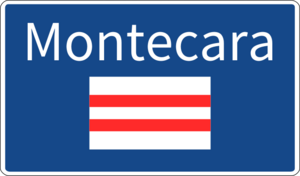
Montecara has a comprehensive, modern transportation network with connections to mainland Euclea. Public transit is provided by the state-owned company Viafèra de Montecara (VM), which operates commuter rail, light metro, tram, ferry, and bus networks and previously operated a bicycle share system. International rail services use the Aurean Tunnel. The hub of the passenger rail system is Montecara Pòrta Conìxia railway station.
The Montecaran government discourages private car ownership due to the dense nature of the city-state and a desire to avoid pollution and the deaths and injuries caused by traffic. The number of license plates issued is capped and new plates are only issued through an auction system. Vehicles are banned in the oldest parts of the city due to the extreme narrowness of many streets and the often fragile pavements. This has preserved Montecara from destruction in the name of road expansion and keeps air quality high. The urban core of Montecara thus remains a very walkable and compact environment.

Because of its commitment to eliminating road deaths, Montecara has some of the most arduous driver licensing requirements in the world. Licensees, who must be between the ages of 18 and 79 inclusive, must pass a medical exam (including vision test), take a classroom-based driving theory course, complete an in-car course with a certified instructor, and then pass written and practical tests. First-time applicants, if successful, are granted a probationary license valid for two years which will be revoked if the driver accrues more than two violations of the traffic code. The medical and written exams must be passed again every other year for the license to be renewed.

All vehicles registered in Montecara must pass annual safety and emissions tests, and may not be more than ten years old. There is a high excise tax on petroleum fuel. Traffic drives on the right according to priority to the right, and only left-hand-drive cars are legal to operate in Montecara. There were 42 traffic-related fatalities in Montecara in 2017, a rate of 2.4 for every 100,000 inhabitants.
There is one airport, Montecara–Enrico Dulio International, which serves as the hub for flag carrier Aeracara. The airport and seaport are operated by the government-owned Porti de Montecara.
Water

Montecara depends on four sources of water: desalination, imports via pipeline from Paretia, the caldera of its extinct volcano, and reclaimed water.
Because they have always been so acutely dependent on limited water resources, Montecara's people have developed inventive ways of making use of what they do have and conserving whenever possible. The traditional method for transporting water to farms and homes is the levàda, a stone channel cut into a hillside. Water condenses more readily at higher elevations and infiltrates the porous bedrock, where it pools and can then be channeled away. The levadà run both on the surface and in underground galleries, both of which also furnish popular hiking trails alongside their routes. Historically, neighborhoods that enjoyed levàda water were greatly preferred to those which had to rely on well water, which tended to taste salty and stale; water-carrier was once a common job in these areas.
There is also a local history of using greywater that goes back to the time of the Solarians. One technique that has been in continuous use since that time is to build houses and apartments around a central courtyard garden irrigated with wastewater from sinks and washing, which provides better air quality, cools the building, and naturally treats the water. New toilet installations since 1995 have been required to use seawater to ease the strain on the drinking water supply.
Demographics
Ethnic composition of Montecara (2019)
Religious adherence in Montecara (2019)
Montecara's total fertility rate is 1.4, giving it a natural growth rate of -1.25% per year. On average, women have their first child at age 27. Net migration results in a gain of approximately 11,000 immigrants per year. If current trends continue, Montecara's population will peak at approximately 2.19 million in 2058. From that point, it will gradually decline until reaching an equilibrium of approximately 1.32 million around 2270.
Ethnicity
Montecaran society is divided between ethnic Montecarans, who comprise approximately three-fifths of the population, and foreigners, who are usually non-citizens and come temporarily to work. Montecarans are a Solarian people related to many other ethnicities in Euclea. They trace their lineage back to the population that lived in Montecara at the time of the Solarian Republic and speak Montecaran, a Romance language, as their common tongue. Solarian Catholicism is their dominant religion.
Immigration and its attendant effects on culture and identity is an issue of paramount importance in Montecaran society and politics. The Montecaran state has on many occasions publicly acknowledged the need for immigrant labor, especially in low-skilled jobs, but at the same time has gone to considerable lengths to protect Montecaran identity.
Language
Montecaran is the sole official language. It is spoken at home by almost all citizens but only about 10% of non-citizen permanent residents. Gaullican is a compulsory subject in school and is nearly universally understood by Montecarans as a second language.
Religion
Montecara is a secular state with no official religion. There is a constitutional right to practice or not practice religion freely. Solarian Catholicism is followed by the vast majority of Montecarans and many immigrants from neighboring Euclean countries. There is a sizeable minority of Atudites. Irreligion has grown significantly since the early to mid-20th century, with nearly one in five residents of Montecara now professing no religious faith.
The Archdiocese of Montecara, the local organization of the Solarian Catholic Church, serves a local population of approximately 1.3 million Catholics, who make up about three-quarters of all residents. It was established in the early third century by the bishop Cuniculus at a time when Sotirian Catholicism was largely an underground movement and was raised to the status of an archdiocese the following century. Five Montecarans have served as Pope, most recently Urbanus XI from 1787 to 1799.
The status of Atudism has been a point of contention for centuries. Montecarans have voted overwhelmingly to ban infant circumcision and other forms of genital cutting, the ritual slaughter of animals and the importation of ritually produced meat, and non-state religious courts or arbitration panels. All forms of polygamy and polygyny are strictly illegal, as is cousin marriage. Adherents of Atudism often hold much more socially conservative beliefs than do other Montecarans, especially in regard to LGBT rights, feminism, and the use of alcohol and drugs, which has brought them into conflict with the majority population at times. Furthermore, the perceived self-segregation of these communities and their high birthrate has led to a public debate on whether, or how, to assimilate them into mainstream Montecaran society.
Education
Education in Montecara is divided into five stages: preschool, primary, lower secondary, upper secondary, and tertiary. School attendance is compulsory between the ages of 6 and 16. There are public and private schools at the upper secondary level and below. Higher education is only provided through the state. There is one university, the University of Montecara, founded in 1291.
Gaullican language is a mandatory subject for Montecaran students at least through the secondary level. Students who have proven their proficiency in Gaullican and are native or fluent in Montecaran may study an additional foreign language. Common options include Estmerish, Vespasian, and Weranian.
The standard grading system, used for students from primary school through the graduate level, is on a scale from 1 (low) to 5 (high). Cases of academic dishonesty may be dealt with by assigning the special grade of 0.
A student's prior academic record and teacher recommendations determine whether he or she may advance from the lower secondary level to the liçeo, the university preparatory form of upper secondary school. The alternatives to liçeo are scuol xenèr (general-education school), which places a greater emphasis on life and workplace skills and does not have a specifically preparatory curriculum, or scuol tenicà, which provides a vocational education in addition to a foundational academic curriculum.
Aspiring university students may take the Matùra at the end of their secondary education. Performance on this test determines whether a student may even apply to the University of Montecara, and is also used by foreign universities and colleges to determine admissions qualifications. The Matùra covers Montecaran language and literature, Gaullican language, sciences and mathematics, civics and government, arts and humanities, and history. A qualifying score consists of at least a 3 out of 5 on a majority of the test's sections.
Stages highlighted in yellow below are compulsory.
| Level | Name | Duration |
|---|---|---|
| Preschool | Crèxe | 3 years (age: 3 to 6) |
| Primary education | Scuol primàr (Primary school) | 5 years (age: 6 to 11) |
| Lower secondary education | Scuol segònd (Lower-grade secondary school) | 3 years (age: 11 to 14) |
| Upper secondary education | Liçeo (University preparatory school) | 5 years (age: 14 to 19) |
| Scuol xenèr (General education) or Scuol tenicà (Technical or vocational education) |
3 or 5 years (age: 14 to 17 or 14 to 19) | |
| Tertiary education | Làurea (Bachelor's degree) | 3 years |
| Magistrà (Master's degree) | 1 or 2 years | |
| Dotoràt (Ph.D.) | 3, 4, or 5 years | |
| Dotoràt medicinàl (M.D.) | 6 years |
Healthcare
Montecara has a universal, single-payer healthcare system. Healthcare is provided by the state free of charge to all legal inhabitants and visitors. The state health program, Sànita Montecara, owns public hospitals and clinics, buys drugs wholesale, pays medical staff salaries, and covers all other expenses associated with patient care. The health system was previously the responsibility of the Solarian Catholic Church but has been in state hands since it was nationalized in 1935.
Montecara enjoys the highest life expectancy of any country at 84.7 years overall, 86.4 years for women and 82.4 years for men. Healthcare spending amounted to 9.5% of GDP in 2017. There are 5.6 hospital beds per 1,000 inhabitants, just over 10,000 beds in total. Montecara has one of the highest ratios of physicians per inhabitants in the world, at 4.42 per 1,000. As with all university education in Montecara, medical education is free of charge, and there is significant competition to work in the domestic healthcare sector. This promotes both a high number of trained clinicians and a high standard of expertise.
Prescription drugs are free of charge. Over the counter drugs must be paid for out-of-pocket. Both prescription and over-the-counter drugs may only be sold at licensed pharmacies (apotecà), which except in the case of those at public hospitals are privately owned. Elective treatments such as cosmetic plastic surgery are conducted only by private physicians and must be paid for out-of-pocket.
As an independent republic, Montecara long had institutions to care for the sick and needy. The oldest still in operation is the Ospedàl da Pìeta, founded in 1508 as a charitable hostel for the sickly poor. The Ospedàl Marìn (Naval Hospital), founded in 1680 to meet the needs of ill sailors, is one of the world's leading research institutions for tropical diseases and nutrition. The University of Montecara Hospital, which is owned by the University of Montecara but jointly operated by the University and Sanità Montecara, is the main teaching hospital.
Montecaran public health authorities have waged several successful disease elimination campaigns dating back to the 1930s. Rabies, malaria, cholera, yellow fever, polio, measles, mumps, rubella, and diphtheria have all been eliminated locally, and only seven cases of imported tuberculosis have been reported since 2000.
Despite its generally strong health metrics, Montecara still ranks high in terms of smoking prevalence and per-capita alcohol consumption. More than four in ten Montecaran adults report smoking at least occasionally, and pure alcohol consumption stands at about 12 liters per person per year. Smoking in restaurants was only banned in 2021 and is still allowed in bars, and the country is one of the last in eastern Euclea to have nearly unregulated, 24-hour access to tobacco through cigarette vending machines. Montecaran voters have historically been loath to limit smoking, in part because the neighborhood sfumerìa is a cherished institution that by definition sells tobacco products. These shops are beloved icons of Montecaran life and an important source of support for the often disabled or otherwise disadvantaged operators, who are preferentially licensed as a form of social welfare.
Culture

Montecara has a Solarian culture that highly values aesthetics, a rich social life, and liberality, among other ideals. It is personified by Aurelia, depicted as a woman wearing a mural crown representing the city's walls. It is her face that the country's namesake mountain is supposed to resemble. Other national symbols include the xinòta tree, which bears the sour citrus that is a common flavoring for drinks and sweets, and the goat, which thrives on Montecara's craggy hillsides.
Art

Montecara has a strong fine-art tradition, particularly exemplified by the paintings produced during the Montecaran Golden Age of the 14th and 15th centuries. Montecaran art was known in this period for its use of vivid color and majestic subject matter, including classical themes and rich interiors. Tixàn Vecèlo is perhaps Montecara's most famous painter, and his masterpiece, Neptune Offering the Wealth of the Sea to Montecara, hangs in the Palaço Pùblico.
The Palaço dei Doxi, the former palace of the Doxe of Montecara, is now a museum with a collection ranging from ancient times to the present day. The Galerìa Sufrèxi, one of the world's most visited museums, houses one of the world's finest collections of Solarian, Medieval, Renaissance, and Neoclassical art. Begun as the private collection of a wealthy merchant, it is now publicly owned.
Architecture

The Montecaran architectural tradition stretches back to the Solarian Republic, which brought its expertise in engineering to the city. Legacies of Solarian architecture, including extensive brickwork, arches, vaults, stucco exteriors, mosaic floors, and wall frescoes can still be seen in contemporary buildings.
Montecaran architecture developed its own style beginning in the late 12th and early 13th centuries under the influence of the master Arnòld di Buçhe, whose treatise Principia architecturae (Principles of Architecture) is still recognized as a world masterpiece in itself. The main body of his work consisted of villas for Montecara's senatorial and patrician class, most of which are still standing.
The state enforces strict historic preservation laws. It is illegal to demolish or substantially alter historic structures, and building designs must be approved by the state architectural review board before construction or renovation. The historic center is particularly well-preserved and was inscribed on the Community of Nations list of World Heritage Sites at the first session in 1995.[1]
Broadcast and print media
Montecara's state-owned television and radio broadcaster is Teleràdio Montecarà. It operates three television and two radio channels and is supported by a license fee applied to cable television, Internet service, and cellular data bills.
Of Montecara's four domestic newspapers, the most circulated is Il Finansiér, which publishes financial news. Its international Gaullican-language edition is distributed worldwide.
Cinema
Montecara has a strong filmmaking tradition going back to at least the 1930s, with the classic Il Paradiso still a household name and widely considered the greatest Montecaran film of all time.
The Montecara Film Festival is the event for which the country is best known, so much so that references to "Montecara" in global media often refer to the festival rather than the country. Held since 1937, the festival is the world's premier event for serious, artistic films. It draws the world's most famous celebrities to the country for a week every October. The festival has greatly contributed to Montecara's reputation as a playground for the glamorous elite and a beacon of style.
Cuisine
Montecara must import nearly all of its basic foodstuffs because of its lack of arable land. It does, however, harvest a great deal of seafood, which is reflected in traditional dishes. The limited farmland is devoted to high-value crops suitable to the climate, mainly grapes (for wine production), olives, and citrus.
Montecara's access to the sea has led to a great variety of specialties making use of local fish and shellfish. Cuttlefish braised in ink, fried sardines, and bixàto, or roast eel, are all typical dishes. Fowl is also a traditional favorite, especially duck and other water birds, and duck eggs are still more popular than their chicken-borne counterparts. Songbirds were also eaten in large numbers up to the 1980s, when their capture was banned by environmental legislation. Montecara is on a major flyway, so stakes covered in birdlime (vignòla) were used to catch birds for culinary use. Though illegal, it is reportedly still possible to find some chefs who will prepare songbirds in the traditional manner. Meat from land animals is a small part of the diet and consists mainly of goat and lamb, though cheese (mainly goat-based) is ubiquitous. The principal cooking fat is olive oil, with duck fat also playing an important role.
Historically, rice (rixo) was the supreme staple food for Montecarans. There was always some domestic production, but Montecarans have relied on the sea trade for the bulk of their rice import for centuries. This is reflected in traditional dishes such as rixoto, a soupy preparation of rice simmered in broth, and rixi e bixi, rice and peas cooked together.
Montecarans generally have a light breakfast on the way to work or school at cafés or stalls located throughout the city. This often consists of a pastry, sandwich, or fruit accompanied by coffee or juice. There is a traditional mid-morning break for coffee around 11:00, and shops and offices often close briefly to allow for this. Lunch, usually the largest meal of the day, is eaten around 14:00 to 15:00, and workers generally take a full hour to do so, often eating at home. Dinner is eaten at about 21:00.
Montecara produces wine in a range of styles and varietals, but by far the most popular type, and the one most closely associated with Montecara's culinary identity, is xàca, a fortified wine made from white grapes. Three varietals enjoy protected status as heirloom crops in Montecaran law, all white grapes: Garganèga, Verdùxo, and Spaiòl. Garganèga is used to make still wine noted for its lemon and almond notes, Verdùxo is favored for the sparkling white Caràxa, and Spaiòl is used to make both a golden dessert wine with notes of honeysuckle and apricot and a light, acidic still wine. All three are used to make xàca, which can range in color and sugar content from nearly clear and dry to almost black and very sweet. Under Montecaran law, only wine that is produced from 100% domestic grapes can be sold as "Montecaran wine" (vin Montecarà). Montecara has high per-capita alcohol consumption rates, and in addition to wine, beer and spirits are popular.
Montecara is known for its sweets, notably xinòta-flavored marmalade and hard candy and formàxo giàço, a frozen dessert and snack similar to ice cream that is flavored with soft cheese and usually served in a split-open sweet bun (brioxa).
Special foods are eaten around Easter. These include galani, a rum-flavored fried pastry served with lemon zest, and pandòr, a sweet egg bread. Easter lunch traditionally includes a feast of seven different types of fish, the exact components of which vary but which generally include clams, scallops, salt cod, anchovy, and sea snails.
Music
Montecara has a strong operatic and orchestral musical tradition dating back to the first operas written in the early 17th century. Because the arts in republican Montecara were supported by public funds and not only wealthy patrons, it was until the late 18th century the only place in the world where opera could be seen by the general public, who were able to simply buy tickets.
The main venue for opera performance is the Teàtro Cavalarìça, a 19th-century house that premiered the works of Montecara's most famous composer, Giacopò Verxì. It still hosts regular operatic performances throughout the year. A classical conservatory, the Academìa da Mùsica, fosters young musicians.
Sport
Association football is by far the most popular participant and spectator sport in Montecara. The men's national team, nicknamed the "King-Killers" (I Matarrè), represents Montecara in international competition. The top professional club, SB Montecara, plays in the Gaullican Super Ligue.
Before the advent of football in the early twentieth century, Montecarans enjoyed traditional sports and games, some of which still survive. Xugo da bilòta, commonly known in other countries as Montecaran bilota, is a handball game played against a wall by teams or individuals and is still frequently played by children in Montecara's narrow streets and as a betting game at the frontò associated with the state casino. Bòxio is a bowling game traditionally played on wet beach sand at low tide.
Montecara is also host to an indoor velodrome and swimming facility and the historic clay tennis courts at the Club Raquèts da Cròxa.
Holidays
Every Sunday is a public holiday, and with very limited exceptions, shops must be closed all day. Workers in Montecara typically receive at least four weeks' paid vacation time per year in addition to public holidays.
| Date | Name | Montecaran name |
|---|---|---|
| 1 January | New Year’s Day | il Capodàn |
| 6 January | Epiphany | ia Epifània |
| 12 February | Victory Day[a] | Fèsta da vitòria |
| The Friday before Easter | Good Friday | Sànta veneri |
| Movable Sunday between 22 March and 25 April | Easter Sunday | Pàscua |
| The day after Easter | Easter Monday | Pascuèta |
| 16 April | Independence Day[b] | Fèsta da independènça |
| 1 May | International Workers' Day | Fèsta dei lavoratòri |
| Thursday 39 days after Easter | Feast of the Ascension | Fèsta da ascenxiò |
| Monday 50 days after Easter | Pentecost Monday | Luni di Pentecòst |
| 15 August | Assumption of Mary | Fèsta da asunxòn de Marìa |
| 1 November | All Saints' Day | Onnisànti |
| 8 December | Feast of the Immaculate Conception | Fèsta da conxeptimènt inmacolàt |
| 25 December | Nativity | Nadàl |
| 26 December | Feast of Saint Stephen | Fèsta di San Stefàn |
- ↑ Commemorates the end of the Great War in 1935 and the end of the Etrurian occupation on 10 February 1946.
- ↑ Commemorates independence from Functionalist Gaullica in 1935.
References
- ↑ "World Heritage". CONESCO World Heritage. Retrieved 3 November 2023.


